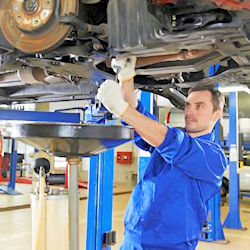Proper Tool Use
Be sure to follow these general rules when using hand tools:
- Inspect tools before using.
- Avoid using damaged tools.
- Tools that appear to be damaged or have broken handles should be marked unsafe and not used.
- Do not use damaged or defective tools until they have been repaired.
Always use proper-sized tools and equipment for the job. Use each tool only for the job for which it was intended. Forcing a small tool to do the job of a large one may result in injury or tool damage. Below are some more important "don'ts" to follow when using hand tools:
- Don't use a screw driver to test electrical circuits.
- Don't use a machinist's hammer in place of a carpenter's hammer.
- Don't strike a hardened steel surface, such as an anvil, with a steel hammer.
- Don't use a wrench that is not properly fitted.
- Don't use pliers in place of a wrench.
- Don't strike wrenches with hammers or use wrenches as hammers.
- Don't push on wrenches: pull on them to tighten or loosen nuts or bolts.
- Don't saw on material unless it's properly secured.
- Don't place your fingers within striking distance when hammering.
Knowledge Check Choose the best answer for the question.
1-9. What is an example of a safe practice when using hand tools?
You forgot to answer the question!

